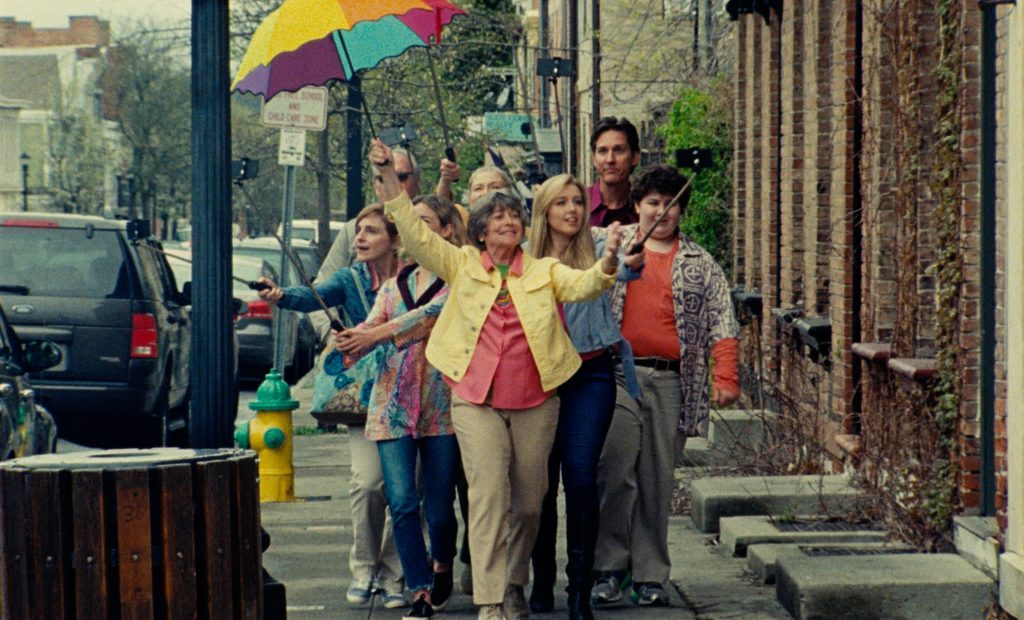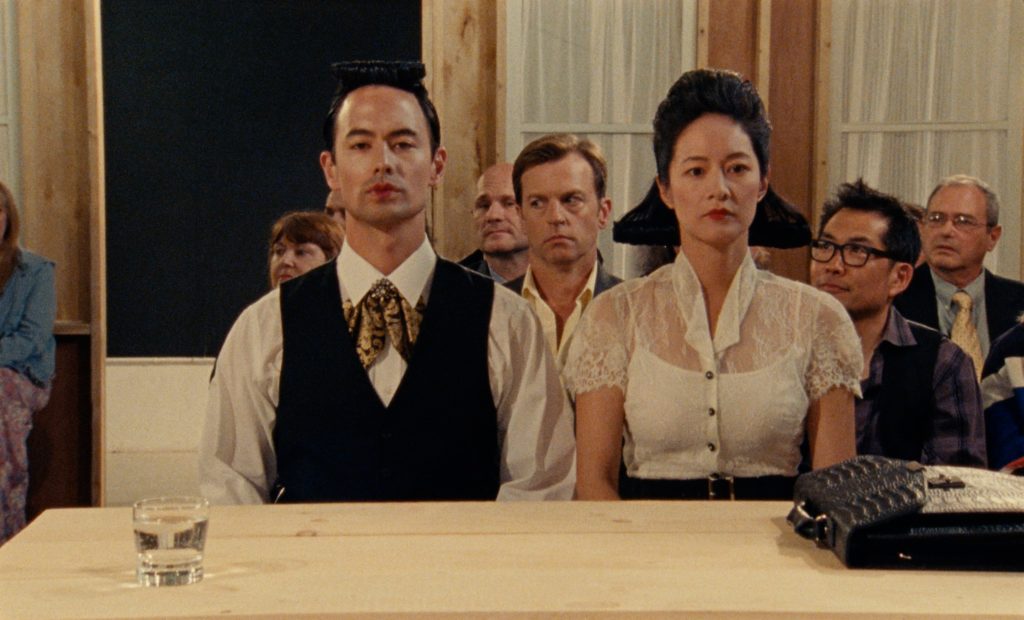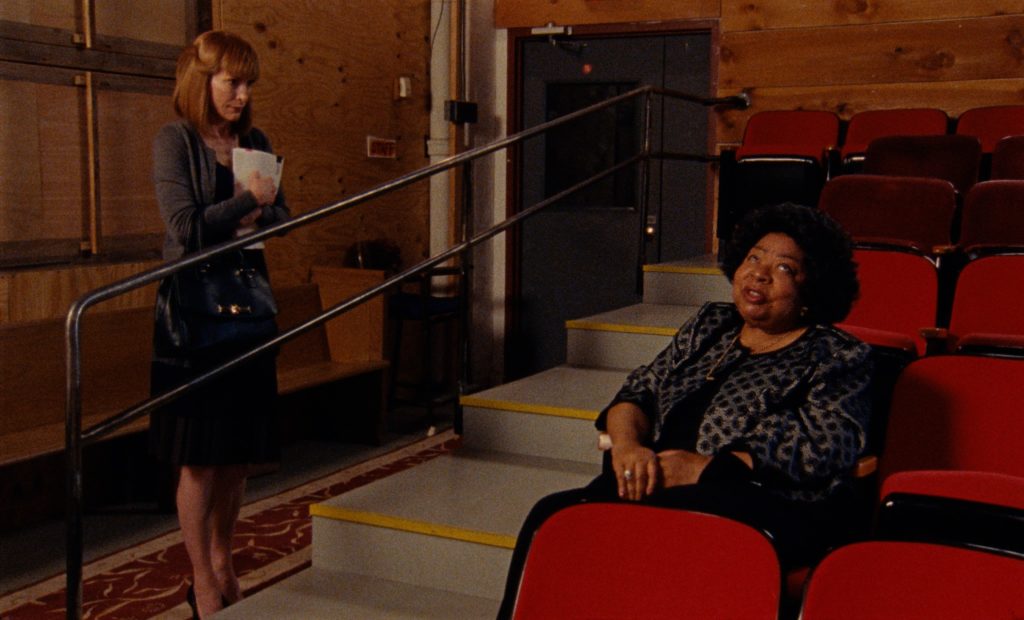Broken Pencil is proud to present a screening of A Bread Factory this Friday March 1st at 7pm at the Royal Cinema in Toronto. The screening is part of this year’s What The Film Festival, a festival of underground and undersung cinema taking place this weekend. Get your tickets here, or better yet, the whole festival pass! Pass holders gets a start subscription to Broken Pencil.
Ahead of the screening, contributing writer Prerana Das sat down with the film’s director, Patrick Wang, to ask a bit about the film’s themes, process, and audience.
In the second part of A Bread Factory, waitress Teresa is told that “every citizen of Checkford appears on stage at The Bread Factory,” that it is almost like a rite of passage. This complex and changing relationship between community and artistic production is explored throughout the two films that together compose this work, which follows a small town coming to grips with a changing local arts ecosystem.
I spoke with director Patrick Wang, who broke down what these connections mean to him, and pointed out some of his sources of inspiration along the way.

What initially turned your interest towards the subject of community-based arts initiatives?
For my first movie, In the Family, I travelled to a lot of independent art spaces. I’d been invited to one in Hudson, New York and I said yes. It’s where we ended up shooting A Bread Factory. The factory in the film is an actual working community arts space.
The second I set foot in the building, I started getting a sense of the kind of people involved in such places, and it created a very warm feeling. There’s a lot to learn from a space like that. I’m not the kind of filmmaker who usually decides to make movies based on feelings, but it was a good memory, involving very generous people, and I enjoyed the company of these people in this place.
While trying to make sense of all these commercial forces and changes in the world, it is nice to have something warm to balance the frigid nature of the industry.
The films emphasize nurturing give-and-take approaches to artistic production, particularly in the involvement of a new generation of artists, the children and teenagers. Are any of these characters inspired by real people?
I wouldn’t say I had specific sources of inspiration from which to draw lines for these characters; it was more a combination of various influences.
Filmmaker Jacques Rivette made a very long series called Out 1, which comes to around twelve hours in length. It’s a funny form of inspiration because Out 1 is not a movie I would recommend to many people, and a lot of it actually frustrates me.
But once in a while there’s a moment when you see something completely new – a type of comedy you’ve never seen before, or a way of looking at people that you’ve never thought of. It teaches you about what’s possible, to search for things, and to experiment. Those are the kinds of inspirations I draw from.
Throughout parts 1 and 2, there are sequences which mirror live performance – for example, the long, uncut monologues. Were you consciously trying to comment on the relationship between films and theatre?
I tend to gravitate towards whatever medium is interesting. What’s nice about spaces like the Bread Factory is that there’s always a lot of art being created. So I lean towards whatever speaks to me; sometimes that’s a play, sometimes a poem, sometimes people.
I think all these forms can help us understand and see ourselves better. A Bread Factory seems to be about the importance of art, but you can also ask: why is art important?
It’s about our connections to one another, and how these mediums let us tend to those connections. In the film, art is not important to Max because he becomes a great actor after reading a monologue, but because this monologue helps him live out his pain and step out of it at the same time.
When you think about art in terms of what it helps us accomplish on a human level, different forms of media are more related than they might initially seem.
The FEEL Institute, the new arts company in town, is presented as showy, pretentious, and shallow, whereas the supposedly homegrown Bread Factory relies on its art to speak for itself rather than on gimmicks. The latter seems to emphasize an uncompromising commitment to the “classics.” Would you say you’re presenting an idealistic statement about the difference between two methods?
A Bread Factory does seem to set up this choice, but I think it’s a false choice. When commercial forces get behind one type of art, it becomes so supercharged that others can’t exist; I think that can become dangerous and can kill imagination and conversation within a community.
Each side has its place, and one of the issues is that there’s a class separation between the two. They each have interesting things to say to one another. The danger of this conflict is that we tend to label one thing as “real art,” and the other as fake. That’s almost never true. Oppositional forces exist for a reason.
Class differences are clearly present throughout, but how did you want to approach the subject of race, particularly with May Ray?
I think there are race issues in the films which appear a lot like class issues – not always obvious. Sometimes I like short circuiting these issues. When a group of people oppose May Ray coming into their community, to what extent is that opposition based in xenophobia? That could be dangerous, but it’s also complicated.
Race definitely comes into the mix, and I hope it gets very confusing. Because to me, that reflects how race enters conversations in real life. When a race-related question comes up, it’s not like a simple test question – it’s confusing, and related to a lot of other issues which also need to be detangled.
In your experience, do you think that creative production has become increasingly commodified for wider consumption?
I think one of the broad forces at play is economic anxiety. It manifests itself in us wanting practical ways to profit and fast payouts from things we engage in. So the things that have broader value rather than immediate monetary value are in danger.
I went to MIT, which is not generally thought of as an arts university, but there’s surprisingly a lot of art in that community. It became prevalent on campus after a commission realized, “these people are going to build weapons which can destroy the world. We want them to have some humanity!”
Despite all the debates around left vs. right brained people, most of us have a whole brain. We tend to give up based on slight differences between left and right, which I think leaves us as incomplete humans. Combining the two allows us to question what it means to create and grow.
How do you think that small community arts initiatives can continue to thrive and claim space in a changing artistic climate?
What I hope is that people remember to pay attention. Remember to support them when it’s easier to forget them.
When it comes to determining whether or not an organization survives, it can be random. Sometimes you just get lucky or unlucky. I think a lot of it falls on the shoulders of the younger generation, but they need mentorship and support to carry on this line of succession.
Prerana Das is a documentary filmmaker and photographer with a particular interest in stories of migration and processes of displacement.
